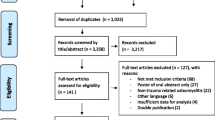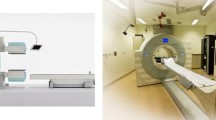Abstract
Objective. A retrospective study of the validity of combined bone scintigraphy (BS) and immunoscintigraphy (IS) using 99mTc-labelled murine antigranulocyte antibodies (MAB) and magnetic resonance imaging (MRI) in chronic post- traumatic osteomyelitis.
Design and patients. The results of MRI and combined BS/IS of 19 lesions in 18 patients (13 men, 5 women; mean age 45 years, range 27–65 years) were independently evaluated by two radiologists and one nuclear medicine physician with regard to bone infection activity and extent. The patient group was a highly selective collection of clinical cases: the average number of operations conducted because of relapsing infection was eight (range 2–27), the average time interval between the last surgical intervention and the present study was 6.5 years (range 3 months to 39 years), and from the first operation was 14 years (range 1.5–42 years). Interobserver agreement on MRI was measured by kappa statistics. Sensitivity, specificity, accuracy, positive predictive value (PPV) and negative predictive value (NPV) were calculated for MRI and the nuclear medicine studies.
Results. For MRI/nuclear medicine, a sensitivity of 100%/77%, a specificity of 60%/50%, an accuracy of 79%/61%, a PPV of 69%/58% and a NPV of 100%/71% were calculated. Four MR examinations were false positives because of postsurgical granulation tissue. A high degree of interobserver agreement was found on MRI (κ=0.88). A low-grade infection was missed on two scintigrams, while four were false positive because of ectopic haematopoietic bone marrow, and in one examination the anatomical distortion resulted in an inaccurate assignment of the uptake leading to false positive findings. Image analysis was frequently hindered by susceptibility artefacts due to residual abrasions of metallic implants after removal of orthopaedic devices (15/18 patients); this led to limited assessment in 17% (3/18 patients).
Conclusion. Acute activity in a chronic osteomyelitis can be excluded with high probability if the MRI findings are negative. In the first postoperative year fibrovascular scar cannot be distinguished accurately from reactivated infection on MRI and scintigraphy may improve the accuracy of diagnosis. MRI is more sensitive in low-grade infection during the later course than combined BS/IS. Scintigraphic errors due to ectopic, peripheral, haematopoietic bone marrow can be corrected by MRI.
Similar content being viewed by others
Author information
Authors and Affiliations
Additional information
Received: 17 December 1999 Revision requested: 25 January 2000 Revision received: 15 March 2000 Accepted: 4 April 2000
Rights and permissions
About this article
Cite this article
Kaim, A., Ledermann, H., Bongartz, G. et al. Chronic post-traumatic osteomyelitis of the lower extremity: comparison of magnetic resonance imaging and combined bone scintigraphy/immunoscintigraphy with radiolabelled monoclonal antigranulocyte antibodies. Skeletal Radiol 29, 378–386 (2000). https://doi.org/10.1007/s002560000228
Issue Date:
DOI: https://doi.org/10.1007/s002560000228




